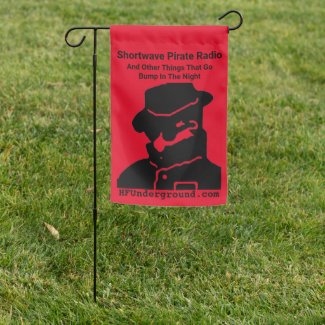I put up the second turnstile antenna Friday, and fed both of them in phase with two 3/4 wave lengths of RG-11 mounted a whole wavelength apart. I did several tests, for both range of the detectable signal and how well it covered the local area as far as signal strength, reliability while driving, fading, picket-fencing/multipath, etc. at 1, 2, 5, 10, and 15 watts before and after adding the second bay.
For my calculations, I assumed I'm getting somewhere close to the theoretical 3 db gain from the 2 bays, which brings the total gain of the array up to 0 db, since a single CP dipole is -3 db. In reality, I know it's not that high with four additional mechanical connections for the tee and second antenna as well. The additional cable loss is probably negligible.
As you would expect, on hilltops with a clear-ish line of sight to the antenna, I got a little more range with the 2-bay array for each power level. In fact, with 15 watts I was able to "hear" the station on extremely distant hilltops, although it certainly wasn't what I would call "listenable". Using a communications receiver (fancy scanner) with a mag mount antenna I got the expected rise in signal strength of around half an S-unit (3 db) for a given power with a reasonably clear line of sight.
But the surprising part was, as OgreVorbis suggested, in town I actually got worse performance between brick/stone buildings using the 2-bay array. I don't usually think of a 3 db difference as very big, but I understand that gain has to come from somewhere. I just didn't expect a 3 db difference at the horizon to result in a 1-2 S-unit (6-12 db) difference in some places in town.
One other thing I wasn't taking into account was RF horizon. At 100 ft the curvature of the earth limits line of sight to 12 miles with an RF horizon of about 14 miles without any obstructions like trees or hills. So without help from favorable propagation, not matter how much power I use, I won't get further than that without finding a new transmitter site.
It's been a fun experiment, and I'll probably leave the 2-bay array in place for a while, but it looks like I'm just going to go back to a single CP crossed dipole, as that seems to be the best performer for me. And now that I have a second antenna, I might be able to set up another transmitter on my side of town for my own "translator".
The beam idea JimIO suggested is a good one, and I might experiment with some kind of reflector behind the existing CP antenna. For the time being, I want to stick to circular polarization, because I understand cross-polarization losses when using linear polarization. That's why I started experimenting with circular polarization in the first place.
Thanks for all your help and ideas. If I decide to take on a CP beam, I will start a new thread focused on the build.



